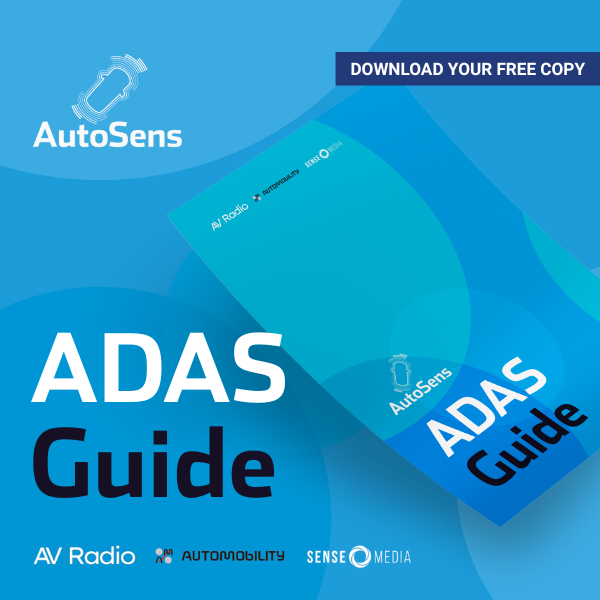We spoke to Adrian (Adi) Capătă who leads the in-cabin sensing product line for DTS/XPERI
Adi was one of our keynote speakers at InCabin in September and he covered the importance of user experience enablement in in-cabin sensing, on top of regulatory needs.
As Senior Vice President of Engineering at DTS/XPERI, Adi is accountable for anything from product vision and strategy to execution, taking an innovative idea through all the steps needed to become a reliable software product, from incipient research to deployment on customer platforms.
1. How was InCabin Brussels for you?
There is one word that comes to mind, and that is timely. InCabin’s focus means it offers more depth than bigger and more established events with a broader technology or automotive agenda. To be under the same roof with over 300 professionals in the in-cabin space has a way of making you feel understood, but also hear the vision and struggles of others. To bring together OEMs, Tier 1s, Technology Makers, Sensor and Platform companies as well as media and industry analysts, is something that was – to my knowledge – not done before in this format. It is also a great opportunity for start-ups, data, and software companies to get in touch with key players in the in-cabin space. As a member of the Advisory Board, I got the opportunity to meet industry rock stars, and be involved in the selection of the hottest topics for this space. Judging by the success we had in Brussels as a first edition and a one-day event, the InCabin concept is here to stay, and I can’t wait to help build it.
2. What is your view on in-cabin safety?
To talk about in-cabin safety, I’d like to address it as a concept. It certainly goes beyond Driver Monitoring Solutions (DMS), airbags, seatbelts, or the highest NCAP rating. The concept of safety is deeply ingrained in humans. It’s the prerequisite for everything else. From the very beginning of human civilization, safety has been a must. We need to feel safe before anything else. In automotive, in-cabin safety saves lives. It is another layer that car builders use to keep the end users safe. The first DMS was introduced by Toyota in 2006. 17 years later these systems are trialed out, tested, and are mature enough to be regulated. They will continue to improve. Most of the focus will be on optimization, integration, testing, and corner case improvement. So, the question is how the driver-centric solutions of the future will look a decade from now. The state-of-the-art DMS today delivers results, so it’s unlikely that we will see much breakthrough a decade from now. We will rather see adoption, and this will happen via regulations. Most likely we will see a race to the bottom: who can do it cheaper and better, where the core will be about data, and being able to add another 0.5 ° precision to one’s gaze solution. To sum up: safety is a must and it’s already happening.
3. What is your view on in-cabin experience?
I will also start by referring to the concept. I’ve mentioned that safety ensured our survival as a species. The first cave was the true beginning of our safety journey. However, the first cave is never the subject of study, but the first cave painting is. If safety is a must, experience is a need. Safety leads to comfort and comfort is the seed for curiosity. This is how we become open to new experiences and end up searching for them. It was much easier for our ancestors to paint, knowing they were safe.
There is a difference between how safety is perceived by the end user and by those that build the product or the service. When the average user goes to the car dealer, they will not ask about the gaze accuracy of the DMS system or the composition of the braking pads. Other traits will weigh heavier in the buying decision. This does not mean that safety is disregarded. Safety is implied. It comes with the brand, with the regulations. The typical user will rather use experience traits in their decision because they know the vehicle is safe. The car is the most expensive smart device we purchase, so we want to be pleasantly surprised and impressed. The user experience vision is not driven by requirements. It is ahead of the requirements, centering around the user’s needs, taking risks, bold decisions and making them a reality. To sum up: experience is a need; if safety enables options, user experience drives decisions.
4. What is a “third space” and how can this impact the vehicles of tomorrow?
User experience will be at the center of tomorrow’s automotive in-cabin. Today we see outstanding innovations presented as prototypes by various OEMs. Despite their best efforts to deploy state-of-the-art features that we find in other industries, I can’t shake the feeling that the average user is somehow reluctant to fully embrace or adopt them. It’s like something is missing. I think the core problem is the way we relate to the car. The car is a symbol of freedom, of financial independence. It gives you the freedom to go from A to B and symbolizes financial independence because it’s expensive. Despite custom seat covers, scented pine trees that hang from the mirror, or even interior tunning, the car’s interior somehow never managed to become more than the utilitarian place you need to be in to reach your destination. Your coffee shop, your salon, your local mall, and the cinema, often rank higher on your list of preferred spaces than the car’s interior, even though you might spend the same amount of time inside the car to get to those places.
Our vision is to reposition the in-cabin space in the mind of the average user and transform the in-cabin space into a much desired “third place,” a place of refuge and extraordinary experiences. We have the technology and experience to make it happen. If you want to know how the in-cabin space can become the destination – not the way – and what is the connection between a “third place” and a “third space”.



